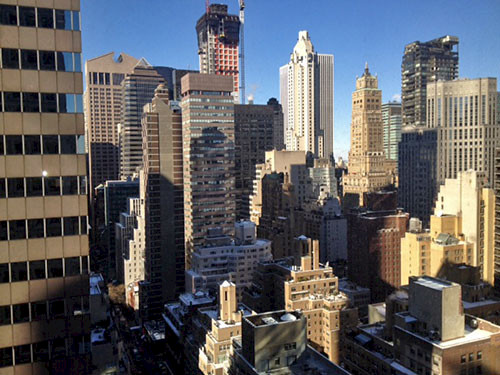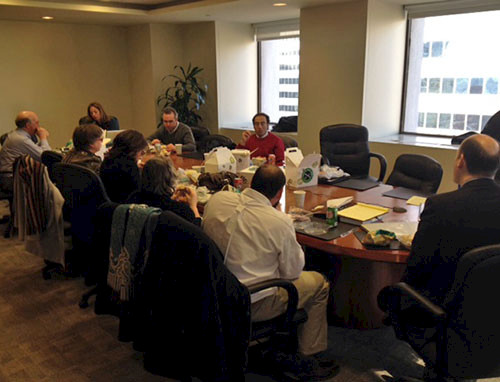Long Island Sound funders meeting
Bill Dennison ·On 24 Jan 2014, I traveled to New York City to meet with the Long Island Sound funders network. This recently formed group is pooling their resources to develop Long Island Sound conservation and restoration initiatives. They are a stimulating and thoughtful group of people from different organizations with different backgrounds, united in this effort to make Long Island Sound a better place to live for the 8+ million people who call the Long Island Sound watershed home.
My presentation was about the groundwork we were laying and plans we were developing for our Integration and Application Network's (IAN) project to develop both a Long Island Sound-wide report card and to develop regional report cards in partnership with a Connecticut-based non-government organization and a Long Island-based non-government organization.

Following my presentation, David Batker, Executive Director of Earth Economics based in Tacoma, Washington gave an information-dense presentation on the project that he is spearheading. David is an ecological economist, and I first met David in our post-Katrina and Rita efforts to develop a series of IAN newsletters about coastal Louisiana. David talked about the process of developing a watershed economic valuation of Long Island Sound (LIS), based on 14 quantifiable ecosystem services. Examples of these services include aesthetics (e.g., the influence of having a view of Long Island Sound on property values), pollutant reduction of marshes, ability to respond to extreme events (e.g., superstorm Sandy). The numbers that his team are generating need to the finalized, but the annual value of LIS is in the tens of billion dollars and the asset value of LIS is in the hundred of billions to trillions of dollars. I think that these big numbers for the economic value of LIS need to be used when there is a conversation about the high cost of restoration activities for LIS to provide context.
Another aspect of David's work is to suggest sustainable funding models for restoration efforts, using the economic valuations to leverage funding. For example, he talked about a spatial modeling and mapping effort that could generate three kinds of maps: 1) Map of the provisioning aspect of various ecosystem services (e.g, a viewshed map for property values), 2) Map of the beneficiaries of the ecosystem service (e.g., map the tax districts that benefit from the higher property values) and 3) Map of the 'damagers' - those entities that degrade the asset. This exercise can also translate into a 'user pays' model, where the costs of restoration are borne by the beneficiaries and 'damagers'.
There were a several aspects of this economic valuation approach that is consistent with our report card efforts. First, these approaches generate data driven, map based outputs. As a result, they can transcend politics. Second, both approaches need to have final outputs (valuations and report card grades) to be well communicated to a broad audience and to have enough transparency and scientific rigor to be trusted. Thirdly, both approaches need to develop sustainable funding models that allow ongoing input of ecosystem service valuations and report card grades so that they can influence management decisions and policy initiatives.

Mark Tedesco, Director of the Long Island Sound Study, next provided an overview of a recent report that he commissioned (in addition to the economic valuation previously discussed). In this report, an analysis of the various citizen science capacities of Connecticut and New York based non government organizations was conducted. In addition, the report concluded that a centralized data analysis and communication hub would be able to assist the multiple of groups coordinating citizen science programs. This report will aid us in our efforts to scale up the two case studies of regional report cards that we are going to develop.
Traveling to/from New York was challenging due to the recent snows and severe cold weather. I ended up stuck in Grand Central Station with a thousand other people on the night before the meeting when a power failure disrupted the train signals. Fortunately, I had a back-up plan. Traveling across town in a taxi through traffic to catch a direct bus back to Maryland actually cost more than the bus to Maryland. I really do enjoy being able to utilize public transportation, providing me with the time to compose this blog entry, for example.
About the author
Bill Dennison

Dr. Bill Dennison is a Professor of Marine Science and Vice President for Science Application at the University of Maryland Center for Environmental Science.